The TOP 20 Greatest Female Directors
They are the ones who make up the pantheon of female film directing stars. Bold and uncompromising – female directors of the world. Here are 20 of the most outstanding representatives of women’s cinema.
“There is no denying that for many years the film camera was exclusively a man’s toy. As soon as the Lumiere brothers revealed their invention, which they called the cinematograph, to Paris on December 28, 1895, men strapped themselves to the camera and started turning its crank. And most importantly – they directed the lens (…) only at what they liked, giving – what is completely forgotten now – their own, male vision of the world, later recorded in the course of the next hundred years in cinematic images by numerous representatives of their sex” – this is how Grażyna Stachówna summarizes the long history of cinema, in which the participation of women filmmakers was rather negligible. This makes it all the more worthwhile to recall the figures of great female film directors who have worked and continue to work to introduce a female perspective on the world into film.
Female directors
1. Alice Guy-Blaché (1873 – 1968)
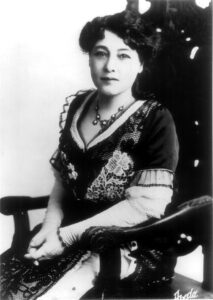
Alice Guy-Blaché is the first female film director in the history of cinema. Born in 1873, the filmmaker initially made films in France, but later moved to the United States. She went there with her cinematographer husband and made her own studio. For a long time she had a stunning career, making films of various genres. Unfortunately, fate dealt with her very cruelly. Her husband fled with his mistress, leaving the director alone with her children, and the studio into which she had put her fortune burned down.
Alice Guy therefore returned to France after this disaster. Unfortunately, all copies of her works were lost, and she lived in poverty. Moreover, despite the vast experience she had, no one wanted to hire her for film production. When the first study of cinema history was published in France, Alice Guy was surprised to find that her name was not even mentioned, and the authorship of many of her films was attributed to other directors (!). She struggled for a long time to get official recognition of her enormous contribution to cinema. Guy-Blaché’s work was appreciated only years later. She was the author of such films as “A Fool and His Money” (1912) and “The Birth, the Life and the Death of Christ” (1906).
2. Lois Weber (1879 – 1939)
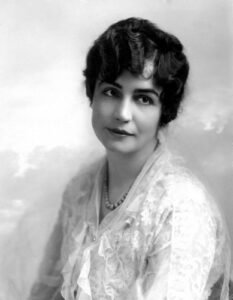
Lois Weber is another pioneer of women’s cinema. The American trained under the tutelage of Alice Guy-Blaché, first as an actress. Her films dealt with distinctive issues, such as a woman’s status in society and motherhood. She was also one of the first to show the naked female body on screen (in the film Hepocrites). Her most important film was “Where Are My Children?”, where the theme of abortion appears.
Weber made several hundred films, many of which were stopped by the censors. Her contribution to cinema is comparable to the achievements of David W. Griffith. She worked with her husband, Phillips Smalley. As early as 1913, she experimented with sound in cinema.
3. Germaine Dulac (1882 – 1942)
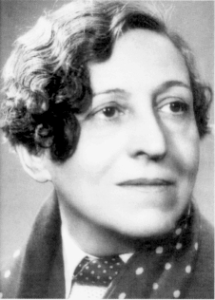
Germaine Dulac was one of the forerunners of film feminism, creating a current of independent cinema (feminist independent film). The French director created avant-garde works, such as “The Smiling Madame Beudet” (1922) – considered the first feminist film. “The Seashell and the Clergyman” (1928), on the other hand, was set in the poetics of Surrealism, and “Spanish Fiesta” was kept in the Impressionist trend.
Dulac began her career as a journalist for feminist magazines. Together with her husband, she founded her own record label, D. H. Films. The director’s greatest achievements were associated with cinematic impressionism and surrealism. After the sound breakthrough, her career declined and Dulac took up newsreel filmmaking for the Pathé and Gaumont studios.
4. Agnes Varda (1928 – 2019)
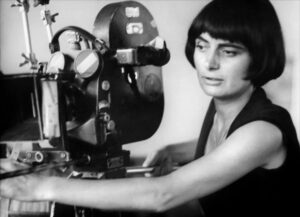
Agnes Varda was another director working in the avant-garde movement – she was one of the representatives of the French New Wave, and is even considered a forerunner of the famous direction. She was married to the well-known director Jacques Demy. She made her debut with the outstanding work “Cléo from 5 to 7”, focused on the theme of death. We observe one day in the life of the singer, who is waiting for the results of tests to confirm or exclude the diagnosis of a serious illness. Varda made mostly documentaries, although one of her most famous films was a feature, “Without a Roof or a Law” (1985), telling the true story of a homeless woman. Varda’s typically feminist film, on the other hand, is “One Sings, the Other Doesn’t” (1976). The picture has the character of a manifesto, showing the different attitude to single motherhood of two women who lead completely different lifestyles. Agnes Varda in 2019 received an honorary Oscar for lifetime achievement.
5. Vera Chytilova (1929 – 2014)
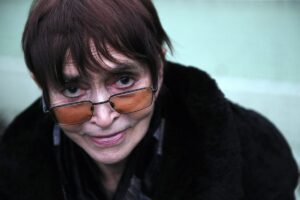
Vera Chytilova is a Czech film director, a representative of the New Wave movement. She debuted with an interesting film “Something Different”, which is an analysis of “the destiny of a woman.” Here the director juxtaposed two different styles and two scenarios of the heroines’ lives. In the documentary part, she showed the preparations of gymnast Eva Bosakova for the last world championships in her career, while the feature told the story of a young married woman overwhelmed by the monotony of domestic duties.
What was new here was not only the gender perspective, but also the exposure of the conventionality of every form of cinema, including documentary. Chytilova also dealt with women’s themes in “Daisies” (1966), an interesting avant-garde picture, called “the most anarchic film in the world.” Two female protagonists, Maria I and Maria II, decide to perversely toy with the rules of patriarchy and collect more lovers and sow omnipresent destruction. Other outstanding entries by the director include “The Apple Game” (1976) and “The Very Late Afternoon of a Faun” (1983).
6. Lana Gogoberidze (ur. 1928)
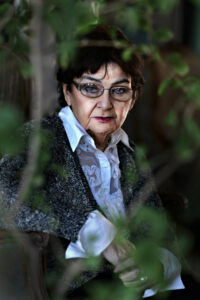
Lana Gogoberidze is a Georgian director interested in women’s issues. Already her first film, “Under One Sky” (1961), dealt with the history of women in Georgia. She made great comedies, such as “When Almonds Blossomed”. She became famous for “Some Interviews on Personal Matters” (1977), as well as the films “Day Is Longer Than Night” (1983), in which she depicted the fate of a female protagonist in the context of the events of the 1920s and 1930s, “Valsi Pechoraze” (1992). The director is also a screenwriter and translator. Among other things, she translated the poetry of Walt Whitman.
7. Larisa Shepitko (1938 – 1979)
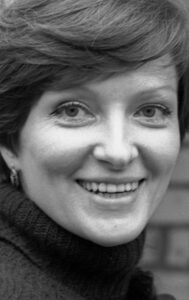
Larisa Shepitko was a well-known Soviet film director. Among other films, she made “Nachalo nevedomogo veka” (1966) and “Ty i Ya” (1971). The first film tells the story of a Soviet female pilot who lost her beloved during the war. As a mature person, she is the embodiment of a “Soviet woman” – a servicewoman with clear-cut views, but at the same time grotesque – funny, evoking sympathy and above all lonely.
You and I, on the other hand, is a story about the inability to love and the emotional emptiness experienced by the Russian intelligentsia. Her greatest achievement was “The Ascent” (1976), which won the Golden Bear in Berlin, the Catholic Jury Prize at the OCIC and the FIPRESCI Film Critics Award. The movie told the story of two Soviet soldiers who are put to the test of honor during World War II. Larisa Shepitko died tragically in a car accident in 1979, returning from the set of her new film “Farewell”.
8. Sally Potter (ur. 1949)

Sally Potter is an English auteur of women’s cinema, known for her avant-garde works. Her most famous film was “Orlando” (1992), based on the prose of Virginia Woolf. Here the director referred both to the myth of Androgyne, present in the works of the English writer, and to the non-linear form of her novels and short stories. Orlando is an expression of the female perspective and her opposition to the discriminatory rules of the patriarchy. In addition, Potter’s well-known pictures include “The Tango Lesson” (1997) and “The Man Who Cried” (2000). The latter starred Christina Ricci, Cate Blanchett and Johnny Depp. Potter is also a composer and has choreographed and danced, which is reflected in her movies.
9. Jane Campion (ur. 1954)
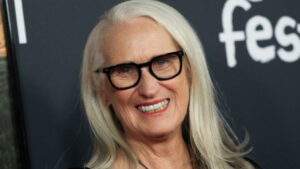
Jane Campion is a renowned Australian director whose films have won the hearts of audiences around the world. She made her debut in the documentary genre, but her most spectacular successes came with the feature film. Beautiful “The Piano” (1993), starring Holly Hunter, was showered with prestigious awards, including three Oscars. Campion’s subsequent pictures are also among the outstanding achievements, such as “The Portrait of a Lady” (1996), “In the Cut” (2003) and “Bright Star” (2009).
Jane Campion places women at the center of her film stories and conducts the narrative precisely from their point of view. She often introduces the voice of the heroine from behind the camera, which initiates the action and emphasizes that the heroine is also the narrator. An important place in the director’s work is occupied by sexuality, shown as one of the most important elements of a character’s identity and expression of her unique potential.
10. Agnieszka Holland (1948)
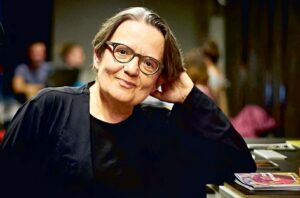
Agnieszka Holland is one of the most prominent female directors in the world. She is among the five female filmmakers nominated for an Academy Award. She received the aforementioned nomination three times for her works: “Angry Harvest” (1985), “Europa, Europa” (1990) and “In Darkness” (2011) – all dealing with the Holocaust. The movie “The Secret Garden” (1993), based on the novel by Frances Hodgson Burnett, was also an international success.
Agnieszka Holland’s work is extremely rich in cultural contexts, among which we can mention historical reflection (especially the subject of the Holocaust), artistic reflection, the perspective of ecology or feminism. Currently, the Polish director holds the honorable position of President of the European Film Academy.
Female Filmmakers
11. Kathryn Bigelow (ur. 1951)

Kathryn Bigelow is one of the female icons of cinema. An American director, but also a screenwriter and film producer, she has made a name for herself as a war filmmaker. Among her best-known works are “The Hurt Locker” (2008), which won six Academy Awards, and ”Zero Dark Thiry”, with Jessica Chastain in one of the leading roles. To date, Bigelow is the only woman to win an Academy Award for directing.
Beginning with her feature-length debut, the director has blended film genres, with particular reference to B-grade cinema, in which the shuffling of various conventions occurs to the fullest. Her works are extremely visual and expose the function of film props and the narratives they build. This can be seen, for example, in the popular movie “Point Beak” (1991), which refers to the aesthetics of advertising and music video. In turn, “Blue Steel” (1990) refers to vido-art.
12. Amy Heckerling (ur. 1954)
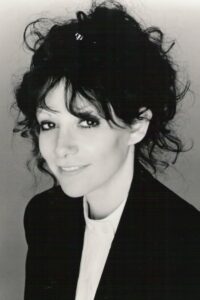
Amy Heckerling is an American director whose credits include the popular family comedy series “Look Who’s Talking” (1989) starring John Travolta and Kirstie Alley. In addition, she produced Loser or “I Could Never Be Your Woman” (2007) with Michelle Pfeiffer. Her work deals with themes of adolescence, motherhood and relationships in relationships.
13. Marta Meszaros (ur. 1931)
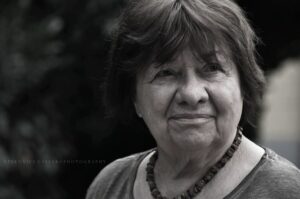
Marta Meszaros is a Hungarian representative of women’s cinema. Her films deal with totalitarian social systems and analyze the situation of female protagonists. Her well-known works include “The Girl” (1968), “Adoption” (awarded the Golden Bear and nominated for an Oscar), “Diary for My Children” (1982) “Daughters of Happiness” (1999) or “The Unburied Man” (2004) – about a Hungarian prime minister, a participant in the 1956 revolution.
The director’s biography is extremely dramatic. In her early childhood she settled with her parents in Kyrgyzstan, but during the Stalinist terror, in 1938, her father-sculptor was arrested and sent to a gulag in Siberia, from where he never returned. Her mother, in turn, became seriously ill and died after several years of searching for her husband. Little Martha wandered from then on among foreign families. Eventually she was adopted and brought to Hungary by a high-ranking security officer. This opened the door for Meszaros to an elite education. For ten years she was married to a well-known Hungarian director, Miklos Jansco, with whom she had three children. Among other things, her marital experiences, but also and above all those of her childhood, opened Meszaros to women’s themes, which became the most important interpretation of her cinema. For several decades she was associated with Jan Nowicki, who played the most significant roles in her films.
14. Lina Wertmüller (ur. 1928)
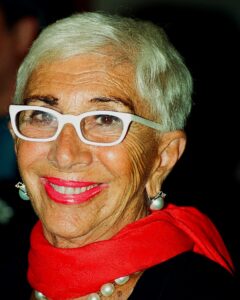
Lina Wertmüller is an Italian filmmaker, the first ever female director to be nominated for an Oscar. Her most famous work was “Seven Beauties” (1976). In addition, she made such films as “The Seduction of Mimi” (1972), “Blood Feud” (1978) and “Camorra” (1985).
Lina Wertmüller came from a respectable aristocratic family, but already as a teenager she manifested a very rebellious character (among other things, she was expelled from school several times). She was fascinated by the films of Federico Fellini, whom she met through her friend Flora Carabelli (wife of Marcello Mastroianni). This meeting resulted in a position as an assistant to the great master. In her work, the director provocatively combined political and sexual themes, referring to the tradition of 17th-century theater of the Baroque grotesque variety.
15. Margarethe von Trotta (ur. 1942)
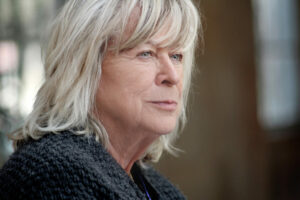
Margarethe von Trotta – a German director, screenwriter and actress – began her career appearing in the films of Rainer Werner Fassbinder. Then, together with her then-husband Volker Schlondorff, she made “The Lost Honor of Katharina Blum”. The director is one of the representatives of the New German Cinema. Her most famous film is “Marianne and Juliane” (1981), which was awarded the Golden Lion in Venice.
Several recurring motifs can be identified in Margarethe von Trotta’s work: these include suicide, the ambiguous nature of interpersonal relationships based on the dialectic of power and submission, and themes of female sisterhood. The issue of terrorism and imprisonment is also prominent in several films, often rising to the status of a metaphor to describe the spiritual and social fate of the characters.
16. Susanne Bier (ur. 1960)
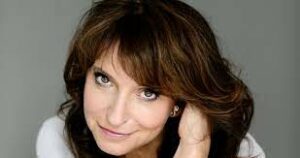
Susanne Bier is a Danish director who has made a name for herself with such films as “Brothers” (2004), “After the Wedding” and “Things We Lost in the Fire” with Halle Berry and Benicio Del Toro. Her greatest acclaim, however, came with her picture In a Better World (2010), which won an Academy Award for Best Foreign Language Film and was also awarded a Golden Globe.
Susanne Bier’s work looks at various forms and levels of violence, especially that which operates within certain systems, such as school surge, terrorism and war.
17. Lynne Ramsay (ur. 1969)

Lynne Ramsay is a British film director who has won prestigious awards such as the BAFTA and the Palme d’Or at Cannes. Among her better-known pictures is the film “We Need to Talk About Kevin” (2011), which tells the story of an extremely difficult relationship between a mother and her antisocial son. Other high-profile works by Ramsay include “Ratcatcher” (1999) and “You Were Never Really Here” (2017).
Ramsay’s cinema focuses on social issues. It grows out of the conventions of realism, but at the same time transcends them, aiming to construct general metaphors through the accumulation of details that function in a double system of meaning. The director is interested in the periphery of social life (such as the environment of garbage collectors in “Ratcatcher”) or experiences that transcend the prevailing pattern of social roles (such as motherhood in “We Need to Talk About Kevin”).
18. Andrea Arnold (ur 1961)

Andrea Arnold – an English director – began her film career making short films, of which Wasp won an Oscar. Her best-known works, however, include “Fish Tank” (2009) and “Wuthering Heights” (2012). The former is a strong moral drama, whose protagonist is a teenage girl.
The director also works for television. She directed seven episodes of the second season of the very popular HBO series “Big Little Lies”.
19. Sofia Coppola (ur. 1971)

Sofia Coppola is a Hollywood director known to the general public. In her films she often presents in-depth psychological portraits of female characters. The director’s best-known pictures are the Oscar and Golden Globe-winning “Lost in Translation” (2003), “The Virgin Suicides” (1999), “Marie Antoinette” (2006) or the Cannes award-winning “The Beguiled” (2017).
Sofia Coppola’s films are part of the indiewood phenomenon, somewhat distancing themselves from mainstream cinema because they surpass it in artistic stature, but they are at the same time pictures aimed at a wide audience and using popular clichés.
20. Isabel Coixet (ur. 1960)
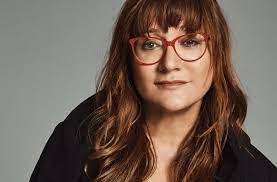
Isabel Coixet is a Spanish director who won international acclaim with her film My Life Without Me (2003). An even bigger success, meanwhile, was “The Secret Life of Words” (2005). The controversial “Elegy” (2008), based on the novel by Philip Roth, also caught the public’s attention.
Coixet often depicts female characters facing life’s dramas, although this has little to do with the melodramatic formula. The diagnosis of a terminal illness or the stigma of the Balkan war are drama, but they also unexpectedly reveal the inner strength of women.
